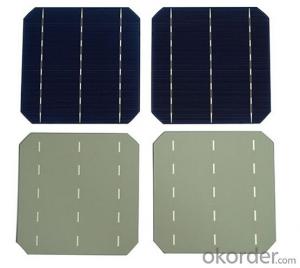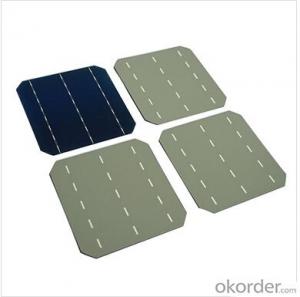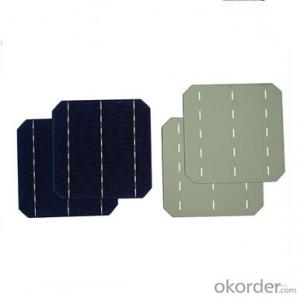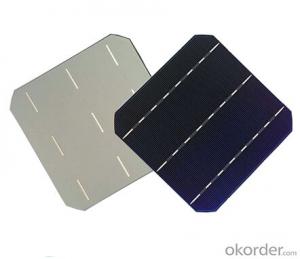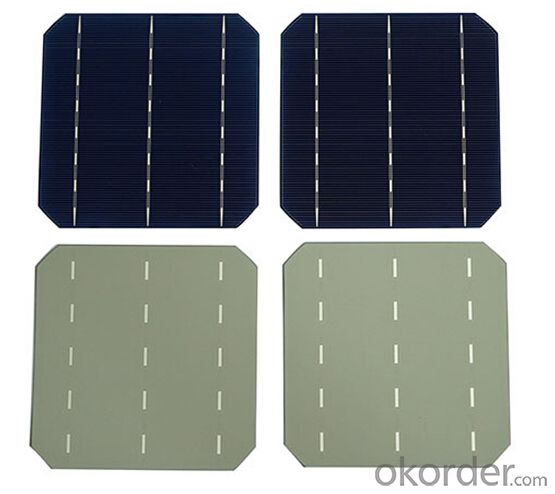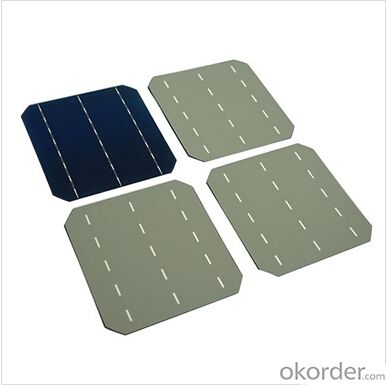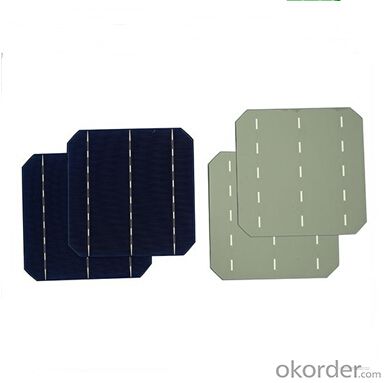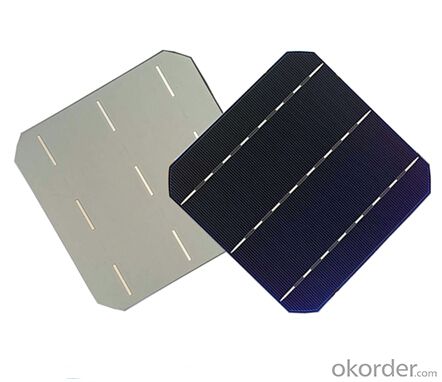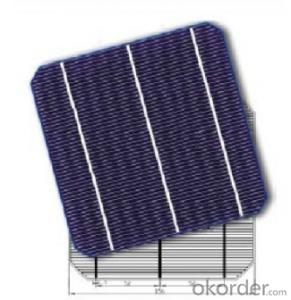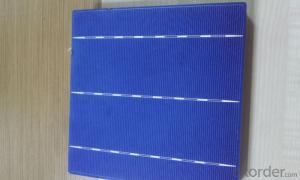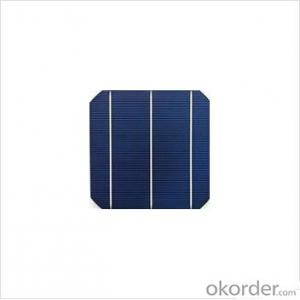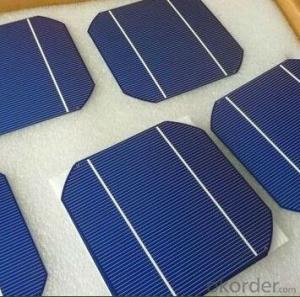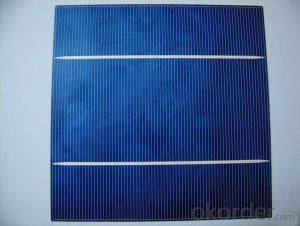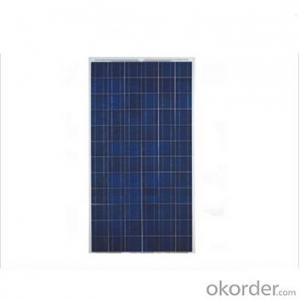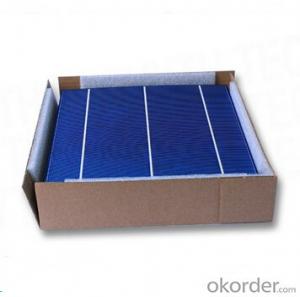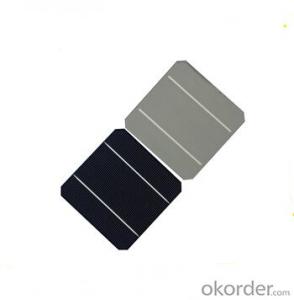Hexagonal A Grade Monocrystalline Solar Cells 17.4x17.6
- Loading Port:
- Shanghai
- Payment Terms:
- TT or LC
- Min Order Qty:
- 5000 pc
- Supply Capability:
- 80000 pc/month
OKorder Service Pledge
OKorder Financial Service
You Might Also Like
Monocrystalline Solar Cells A GRADE
Solar cells is made by solar wafer, it has three categories of solar cell right now, monocrystalline polycrystalline and thin film,These cells are entirely based around the concept of ap-n junction, which is the critical part of solar module, it is the part that can convert the light energy into electricity, the thickness is from 180um to 200um, with even busbars to conduct electricity, textured cell can decrease diffuse reflection; they are often electrically connected and encapsulated as a module. Photovoltaic modules often have a sheet of glass on the front (sun up) side, allowing light to pass while protecting semiconductor wafers from abrasion and impact due to wind-driven debris, rain, hail, etc. Solar cells are also usually connected in series in modules, creating an additive voltage. Connecting cells in parallel will yield a higher current;With high quality and stable quality. Our Cells can greatly improve the performance of Solar Modules.
Advantage of Monocrystalline Solar Cells
• High efficiency and stable performance in photovoltaic conversion.
• Advanced diffusion technique ensuring the homogeneity of energy conversion efficiency of the cell.
• Advanced PECVD film forming, providing a dark blue silicon nitride anti-reflection film of homogenous color and attractive appearance.
• High quality metal paste for back surface and electrode, ensuring good conductivity, high pulling strength and ease of soldering.
• High precision patterning using screen printing, ensuring accurate busbar location for ease with automatic soldering a laser cutting.
Specifications of Monocrystalline Solar Cells
Format : 156 mm × 156 mm ± 0.5 mm
Thickness: 210 μm ±40 μm
Front (-) : 1.5mm bus bars (silver),blue anti-reflection coating (silicon nitride)
Back (+) : 2.5mm wide soldering pads (silver) back surface field (aluminium)
Efficiency (%) Pmpp (W) Umpp (V) Impp (A) Uoc (V) Isc (A) |
18.20% 4.43 0.536 8.263 0.634 8.712 |
18.00% 4.38 0.535 - 8.188 0.633 8.701 |
17.80% - 4.33 0.534 - -8.112 ---0.632 ----8.652 |
17.60% 4.28 0.533 8.036 0.631 8.641 |
17.40% 4.23 0.529 8.005 0.630 8.591 |
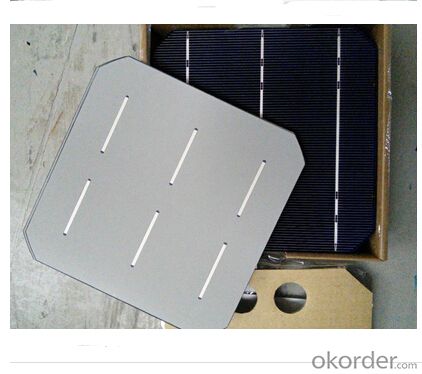
FAQ
We have organized several common questions for our clients,may help you sincerely:
①What price for each watt?
It depends on the efficiency of the solar cell, quantity, delivery date and payment terms.
②How long can we receive the product after purchase?
In the purchase of product within three working days, We will arrange the factory delivery as soon as possible. The pecific time of receiving is related to the state and position of customers.Commonly 7 to 10 working days can be served.
③Can you provide the peripheral products of the solar panels, such as the battery, controller, and inverter? If so, can you tell me how do they match each other?
Yes, we can, we have two companies for solar region, one is CNBM International, the other is CNBM engineering Co.
We can provide you not only the solar module but also the off grid solar system, we can also provide you service with on grid plant.
④What is your warranty of solar cell?
Our product can promise lower than 0.3% open box crack, we support claim after opening the box if it has crackm color difference or sth, the buyer should give pictures immediately, we can not accept the claim after the solar cell has assembled to solar panel.
• Timeliness of delivery
• ⑤How do you pack your products?
We have rich experience on how to pack the solar cell to make sure the safety on shipment, we could use wooden box or pallet as buyer's preference.
New Way of Making Solar Cells Promises Cheaper Power
A new way of making solar cells promises a cheaper way to generate electricity from the sun and new ways to integrate solar power into other products. When the light comes in and is both directly absorbed by the wires, and some of the light bounces around in between the wires. In fact, the absorption enhancement that we see is in the range of 20 to 50 times the single-pass absorbance. The principles with the wire arrays is grow them on a supporting substrate, and peel them off inside a plastic sheet, so that the material has exactly the optical and electrical properties of a silicon wafer, but instead it basically has the mechanical properties of a flexible plastic sheet. Except that, the flexibility opens the door to potential new applications. For example, the solar cell could be built into roofing material, saving money on installation. Other ideas for new uses come from the physical form of Atwater's novel design.
The more wonderful thing about solar energy is that it's accessible and available everywhere in the world, from the cloudiest place in northern Europe to the sunniest place in north-central Africa to the Outback of Australia to South Asia. And in fact the use of solar energy is growing worldwide for that reason."
To make the solar cells greener and more efficient, The scientists used the bacteria Mycobacterium smegmatis. In fact,A mycobacterium is a type of pathogen that can cause diseases such as tuberculosis, but the species scientists utilized in the study is harmless and can be found in soil and cornflakes. It also produces the protein MspA, which can be used for numerous applications once it has been chemically purified.
After purifying the protein, Scientist combines it with a synthesized dye that is less toxic than traditional dyes. The protein-dye mixture is coated onto individual solar cells and tested with artificial sunlight to measure energy output.
The core idea is that the protein acts as a matrix for electron transfer for this dye that absorbs sunlight. We want the protein to be able to capture the electron that the dye gives out and then transfer that electron in one direction, thereby generating an electrical current.
The new dye-sensitized solar cells do not currently improve on the technology’s ability to convert sunlight into electrical current, but they are the first of their kind and could help low-cost solar cells become a more viable option for alternative energy applications.
This type of research where you have a biodegradable or environmentally friendly component inside a solar cell has not been done before, and the research is still in its early stages right now. But we have noticed that it’s working, and that means that the protein is not decomposed in the light and electric generating conditions. Because of that, we believe that we’ve actually made the first protein-incorporated solar cell.
- Q: Can solar cells be used in cloudy or rainy weather?
- Yes, solar cells can still be used in cloudy or rainy weather. While their efficiency may be reduced, they can still generate electricity from diffuse sunlight or indirect light. However, their performance will be optimal in direct sunlight.
- Q: Can solar cells be used for powering electric vehicles charging stations?
- Yes, solar cells can be used to power electric vehicle charging stations. Solar panels can convert sunlight into electricity, which can then be used to charge electric vehicles. This helps to utilize renewable energy sources and reduce the carbon footprint associated with charging electric vehicles.
- Q: What is the effect of shading on solar cell performance?
- The effect of shading on solar cell performance is significant as shading can reduce the overall power output of the solar panels. When even a small portion of the solar cell is shaded, it creates a "hot spot" effect, leading to increased resistance and reduced electrical current. This can result in a notable decrease in energy production, impacting the overall efficiency and performance of the solar cell system.
- Q: Can solar cells be used for powering water pumps?
- Yes, solar cells can be used for powering water pumps. Solar-powered water pumps utilize the energy from the sun captured by solar cells to generate electricity, which then powers the water pump. This sustainable and environmentally-friendly solution is often used in remote areas where there is no access to electricity grids or where using traditional fuel-powered pumps is costly or impractical.
- Q: Do solar cells work in cloudy weather?
- Yes, solar cells can still generate electricity in cloudy weather, although their efficiency may be reduced compared to clear, sunny conditions.
- Q: How do solar cells perform in areas with high levels of pollen?
- Solar cells can be affected by high levels of pollen as it can accumulate on the surface of the cells and reduce their efficiency. The pollen can block sunlight from reaching the cells and hinder their ability to generate electricity. Regular cleaning and maintenance of solar panels in areas with high pollen levels are crucial to ensure optimal performance.
- Q: What is the impact of dust storms on solar cell efficiency?
- Dust storms have a significant negative impact on solar cell efficiency. The accumulation of dust on the surface of solar panels reduces the amount of sunlight that can reach the cells, leading to a decrease in power generation. The dust particles block and scatter sunlight, reducing the overall efficiency of converting sunlight into electricity. Regular cleaning and maintenance of solar panels are necessary to mitigate the adverse effects of dust storms and ensure optimal performance.
- Q: How are solar cells different from solar panels?
- Solar cells are the basic building blocks of solar panels. While solar panels are composed of multiple solar cells interconnected to generate electricity, solar cells are individual units that directly convert sunlight into electricity.
- Q: What is the usage of solar cells?
- The usage of solar cells can be either industrial and residential.
- Q: Can solar cells be used to power remote sensing devices?
- Yes, solar cells can be used to power remote sensing devices. Solar cells convert sunlight into electricity, providing a reliable and sustainable source of power for remote sensing devices in areas where traditional power sources may be unavailable or impractical. This enables continuous operation of these devices, allowing for data collection and monitoring in remote locations.
Send your message to us
Hexagonal A Grade Monocrystalline Solar Cells 17.4x17.6
- Loading Port:
- Shanghai
- Payment Terms:
- TT or LC
- Min Order Qty:
- 5000 pc
- Supply Capability:
- 80000 pc/month
OKorder Service Pledge
OKorder Financial Service
Similar products
Hot products
Hot Searches
Related keywords
